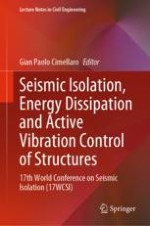This volume gathers the proceedings of the 17th World Conference on Seismic Isolation (17WCSI), held in Turin, Italy on September 11-15, 2022. Endorsed by ASSISi Association (Anti-Seismic Systems International Society), the conference discussed state-of-the-art information as well as emerging concepts and innovative applications related to seismic isolation, energy dissipation and active vibration control of structures, resilience and sustainability. The volume covers highly diverse topics, including earthquake-resistant construction, protection from natural and man-made impacts, safety of structures, vulnerability, international standards on structures with seismic isolation, seismic isolation in existing structures and cultural heritage, seismic isolation in high rise buildings, seismic protection of non-structural elements, equipment and statues. The contributions, which are published after a rigorous international peer-review process, highlight numerous exciting ideas that will spur novel research directions and foster multidisciplinary collaboration among different specialists.
